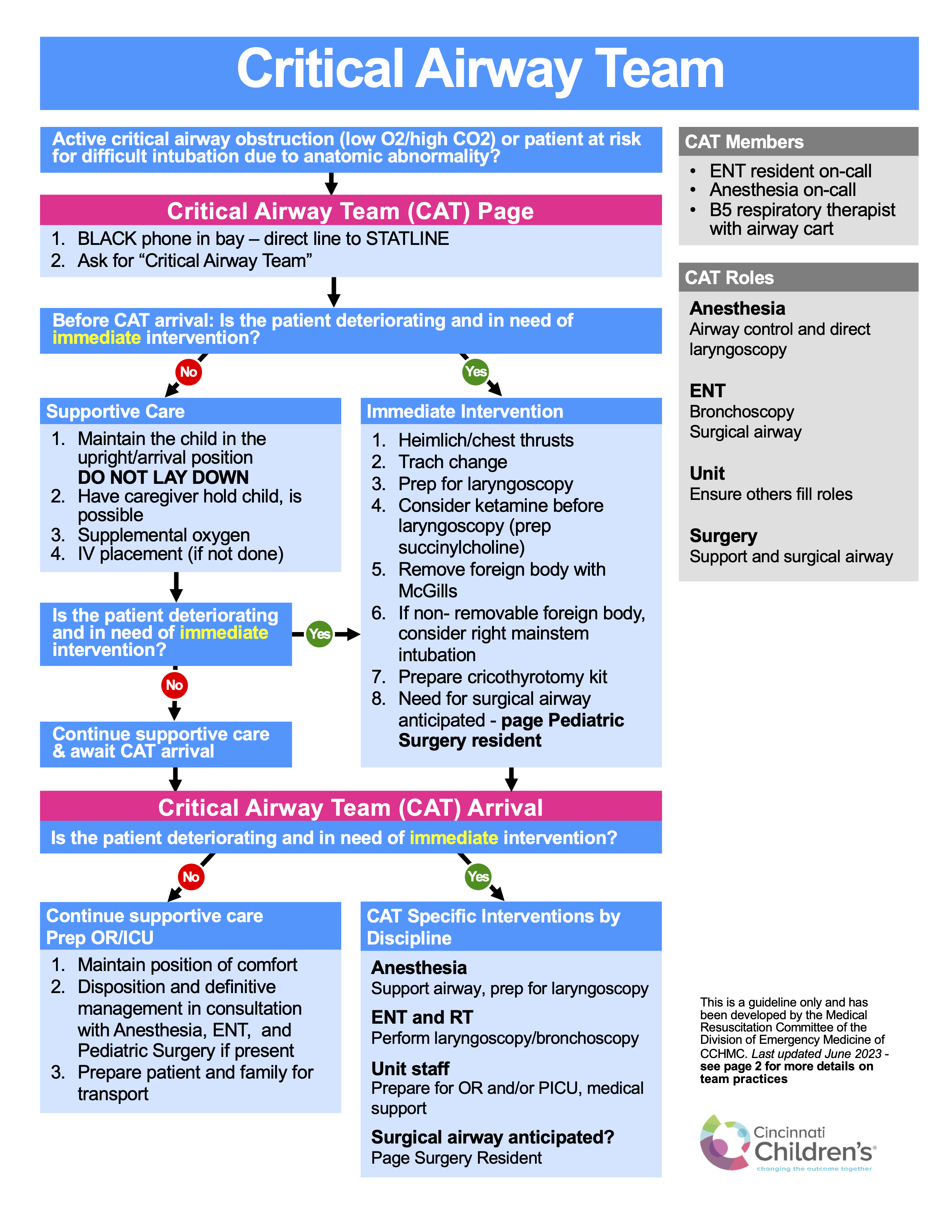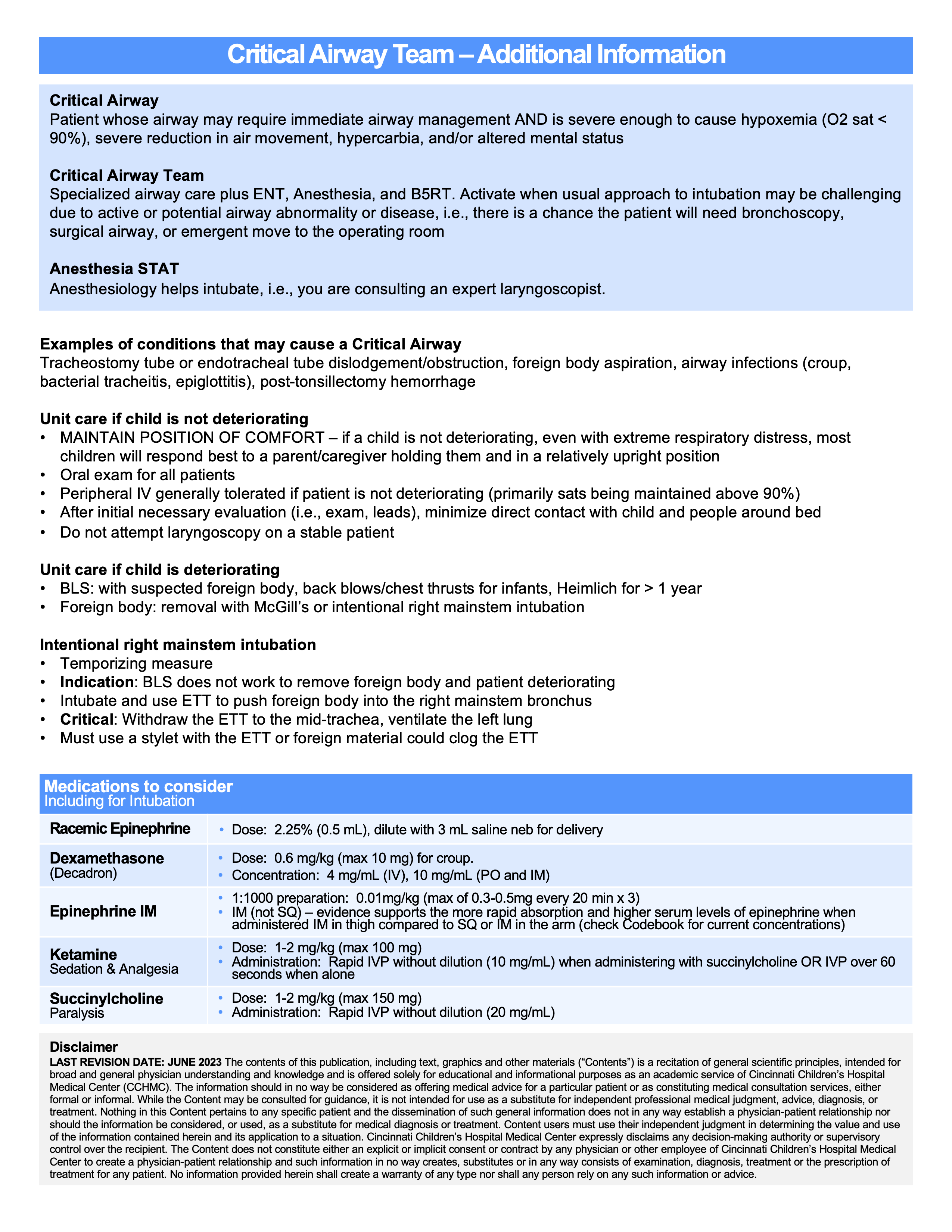

Key Literature
Johnson et al. Simulation to Implement a Novel System of Care for Pediatric Critical Airway Obstruction, Arch Otolaryngol Head Neck Surg, 2012.
Publication Summary: Critical airway events are relatively rare in pediatrics, occurring about 100 times a year in our large pediatric institution. Because of their low frequency, optimizing training and care for patients with critical airway events is challenging. Optimal care is further impeded by the unexpected, time-dependent, and often chaotic nature of these events, which may require advanced, rarely used airway skills. We employed in situ simulation in the resuscitation area of our pediatric emergency department (PED) to design an improved system of care for patients with critical airway events, the Critical Airway Team or CAT. Initial simulations were run to identify latent safety threats and inform the design of the CAT. Additional simulations were then run to test the CAT in the PED before going live. The implementation simulations demonstrated much faster response times for CAT providers and improved care, when compared with the pre-CAT simulations.
What this Work Produced: The CAT consists of a dedicated page to an ENT resident and fellow, Anesthesiology providers, and an airway respiratory therapist. The respiratory therapist brings a dedicated CAT airway cart, which has advanced airway equipment, including rigid and fiberoptic scopes. The CAT went live in 2012 and is activated approximately 100 times a year throughout our institution, most commonly in the Pediatric Intensive Care unit and Complex Airway Unit. The CAT has inspired numerous similar projects at other institutions and continues to be a model for using in situ simulation to redesign critical systems of patient care for high acuity, low frequency events.
